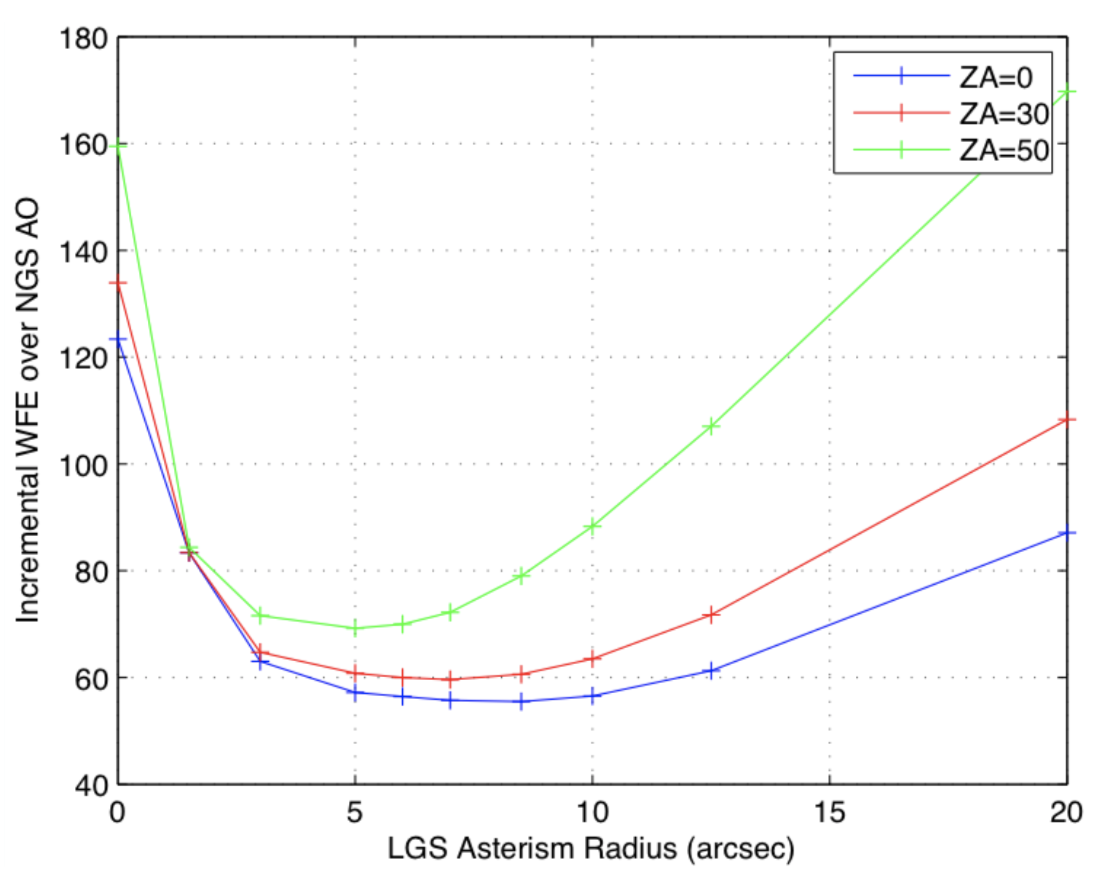KAPA Design
KAPA upgrades the LMCT LGS single-conjugate adaptive optics (SCAO) system to a 4-laser tomographic AO system (LTAO). KAPA offers three fundamental improvements over the existing AO system:
- Higher Strehl is achieved through the use of four LGS for atmospheric tomography to eliminate the “cone effect”.
- More Sky Coverage is achieved by using partially AO-corrected near-infrared tip-tilt stars for low-order correction.
- Accurate PSFs are achieved by deploying new reconstruction techniques that use AO telemetry, atmospheric profiling, and extensive instrument calibrations.
Science Instrument
KAPA’s gains will be delivered to the existing OSIRIS science instrument, which provides diffraction-limited, near-infrared imaging and integral field spectroscopy (IFS) that is needed by all four science cases.
Hardware Changes
The changes required for atmospheric tomography include:
- Replacing the existing laser on the Keck I Nasmyth platform with a TOPTICA/MPBC fiber laser on the elevation ring for sufficient sodium return.
- Implementing a rotating 4 LGS asterism as part of the beam train.
- Implementing a new wavefront sensor camera, specifically a lower noise, larger format OCAM2k camera with four sets of pupil relay optics.
- Implementing a new real-time controller to support laser tomography.
- Upgrading the existing controls and operations software.
- Algorithm changes to the near-infrared TT sensor.
- Developing an operational PSF-R compute facility.
Laser Guide Stars
KAPA includes the implementation of a TOPTICA Raman-fiber amplifier laser on the Keck I telescope to replace the existing Lockheed Martin Coherent Technology laser. The existing Keck I laser, with an equivalent sodium return of R = 9.2 to 9.7 magnitude, is not bright enough to be divided into multiple beacons. The existing Keck II TOPTICA laser typically has the equivalent return of a R = 7.4 star. Splitting its 22 W of laser power into three 7 W beacons would result in R = 8.7 stars (the return has been measured to be linear with power). The predicted performance versus LGS asterism radius is shown below. A 6.35 arcsec radius has been selected for KAPA, as limited by the detector.
